I’ve already told the story of my first disastrous attempt to go north from Bogotá, and on Wednesday I pondered whether I should try again or just skip it and go south and west on my two remaining days. The concept of sunk costs guided me. North had been my first choice all along, and Monday’s debacle was a done deal no matter what I did now. So I went north again. My eventual destination was Villa de Leyva, a town that has carefully preserved its old buildings and now does a booming tourist trade.
It was a breezy day—and also Battle of Boyacá Day, a national holiday—and as I headed up Highway 45 I came across numerous kite vendors.
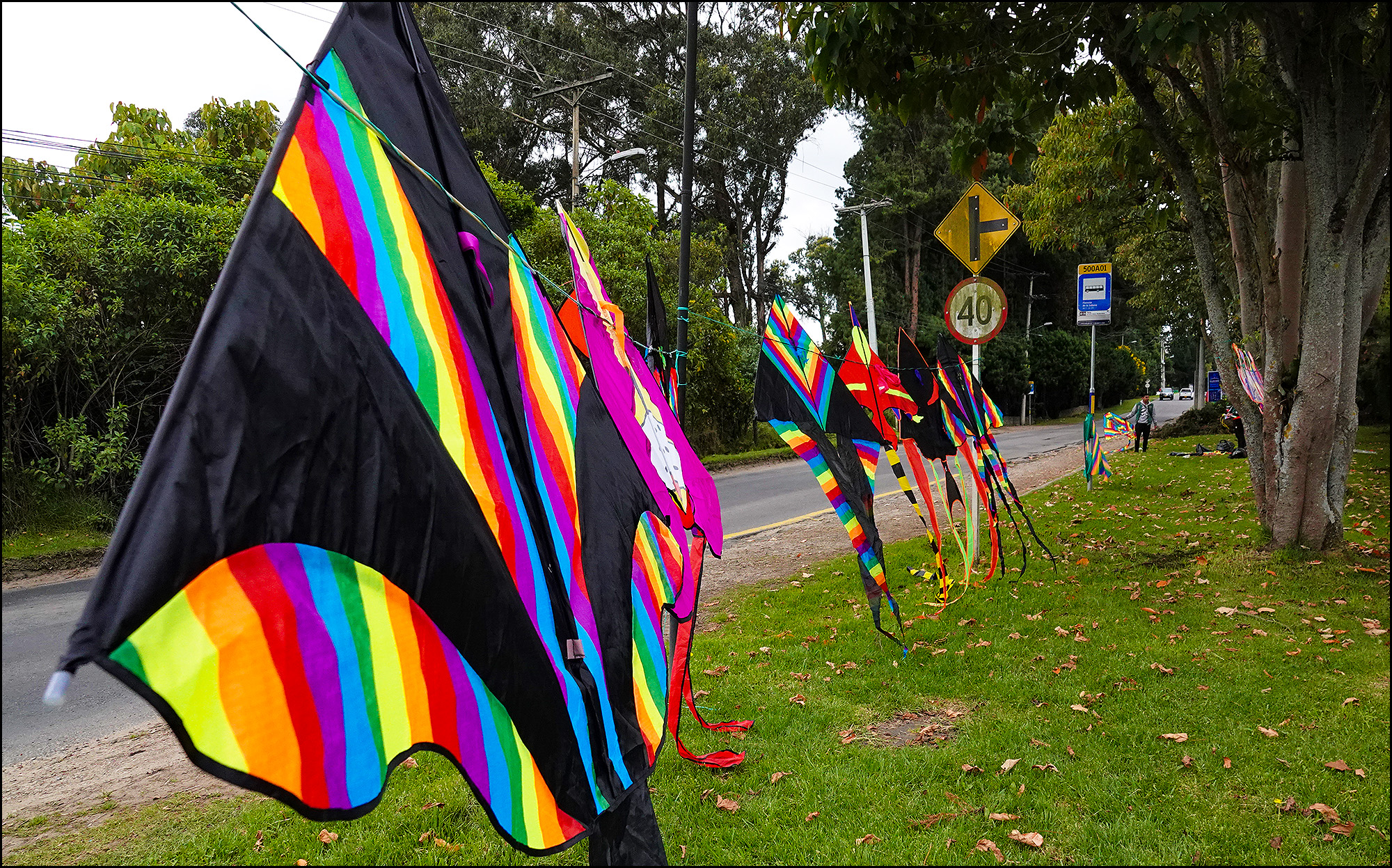
A kite vendor on the road north of Bogota.
A few minutes later, while passing the town of La Naveta, I noticed a plume of smoke in the distance. I figured someone was burning crops, but as I headed toward it the smoke seemed to keep getting farther away. This turned out not to be an optical illusion: the smoke was belching out of a restored old coal-burning locomotive carrying holiday revelers. I took this picture just outside the village of Juncalito.
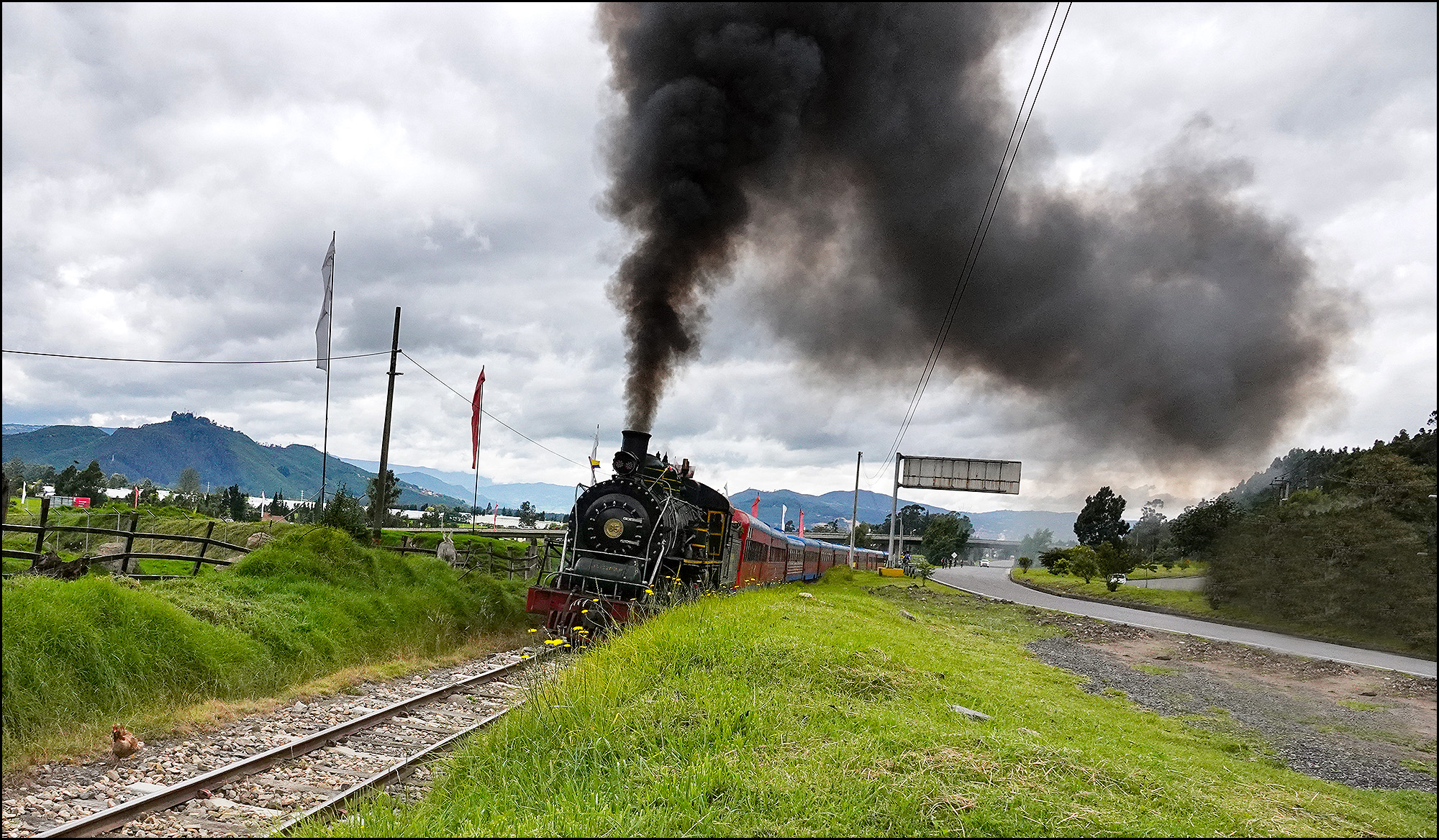
An old coal-fired train carrying holiday-goers to wherever the train goes.
Where were these people going? Perhaps to Zipaquirá to visit the famous Catedral de Sal, an old salt mine that has been converted into a church. I myself decided to keep going and catch it on my way home, which didn’t work out in the end. Still, if you want pictures of that, you can find thousands of them via Google. I am after loftier stuff, like this lovely view looking east from near the town of Tausa.
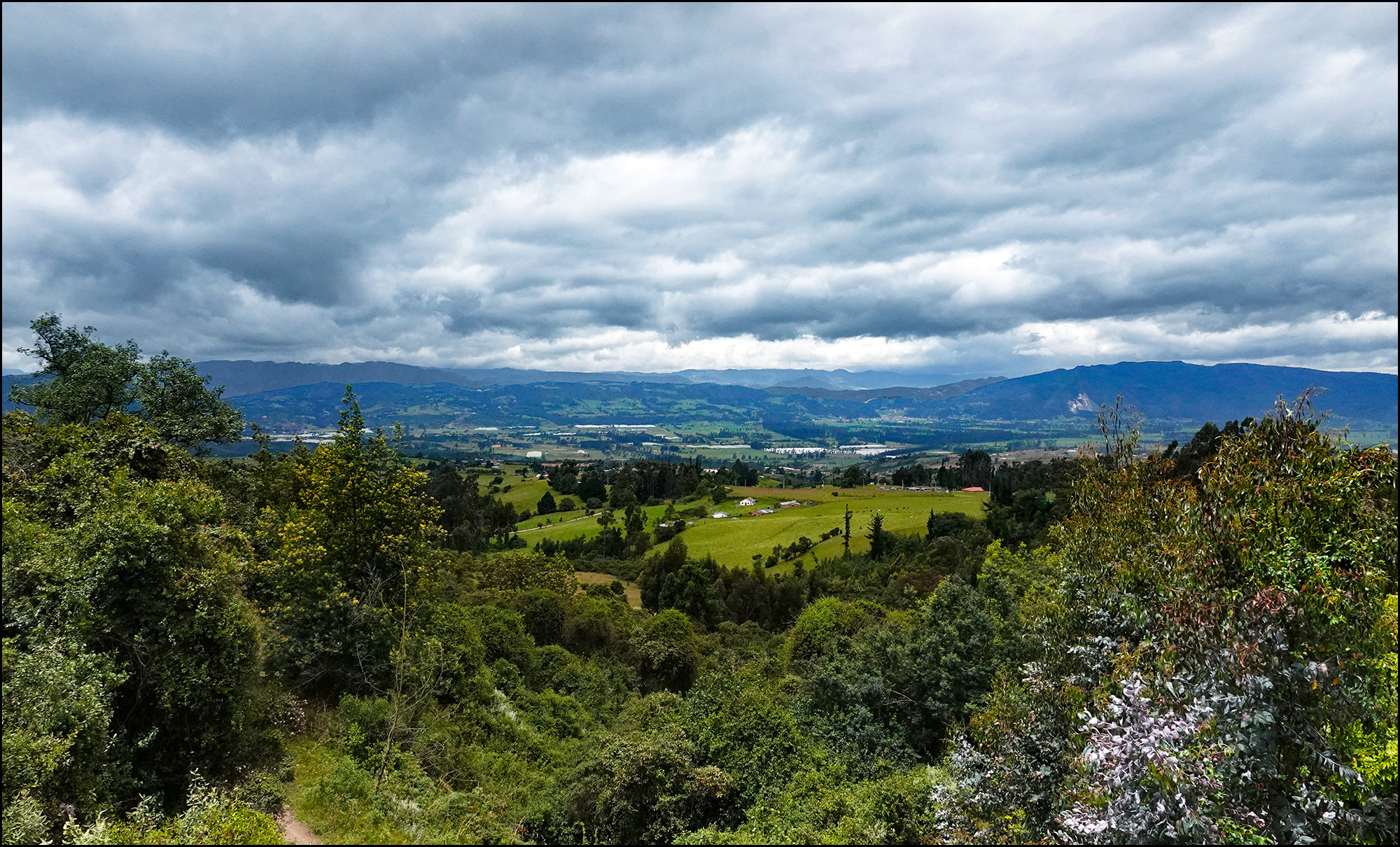
The view east from Highway 45A near Tausa.
I got to the town of Ubaté around noon and figured it would be a good place to stop for lunch and stretch my legs. Ubaté is home to the Basilica de Santo Cristo de Ubaté, which seems like it should be a cathedral but isn’t. It’s just a church.
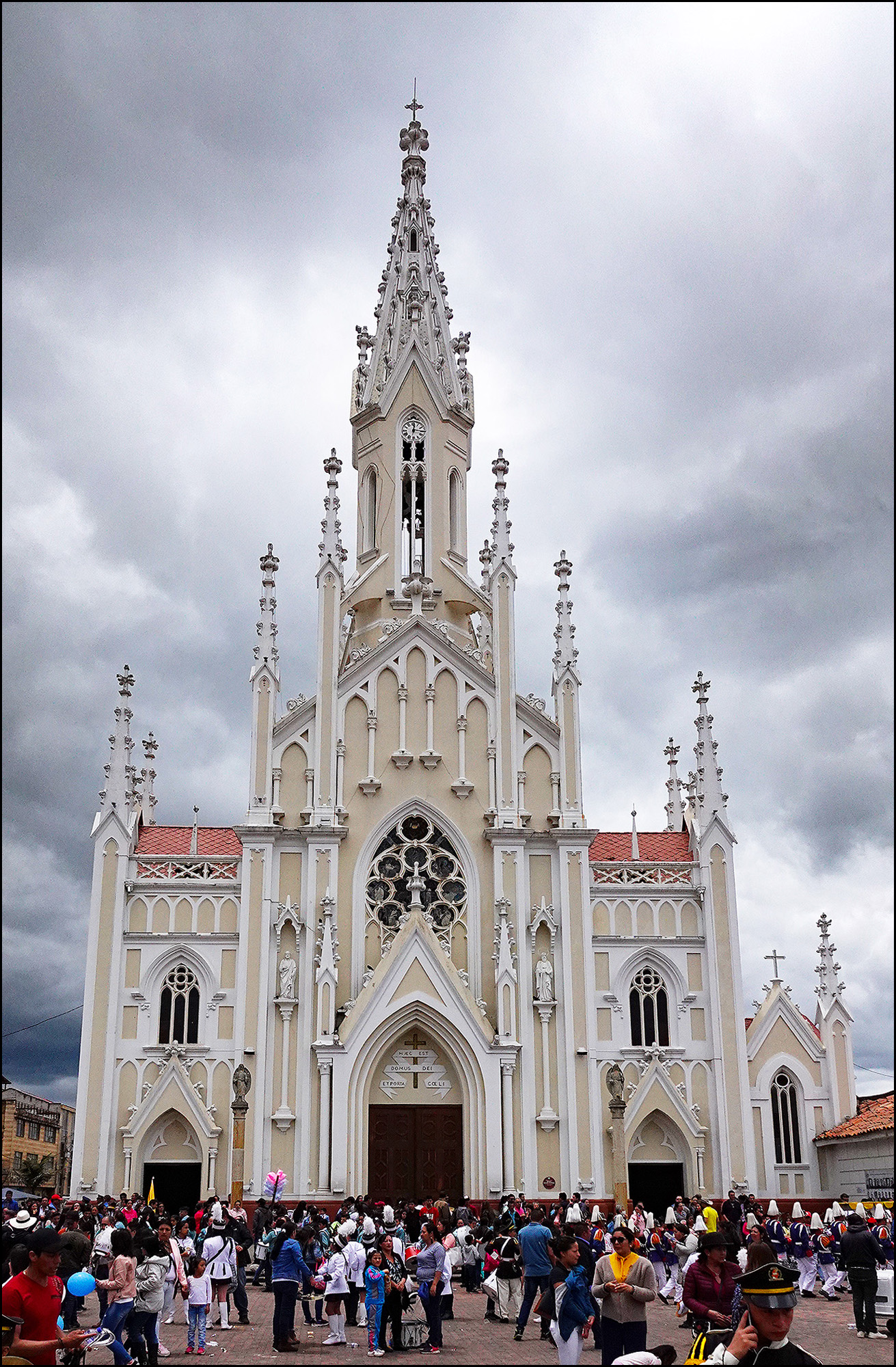
The basilica of Ubaté.
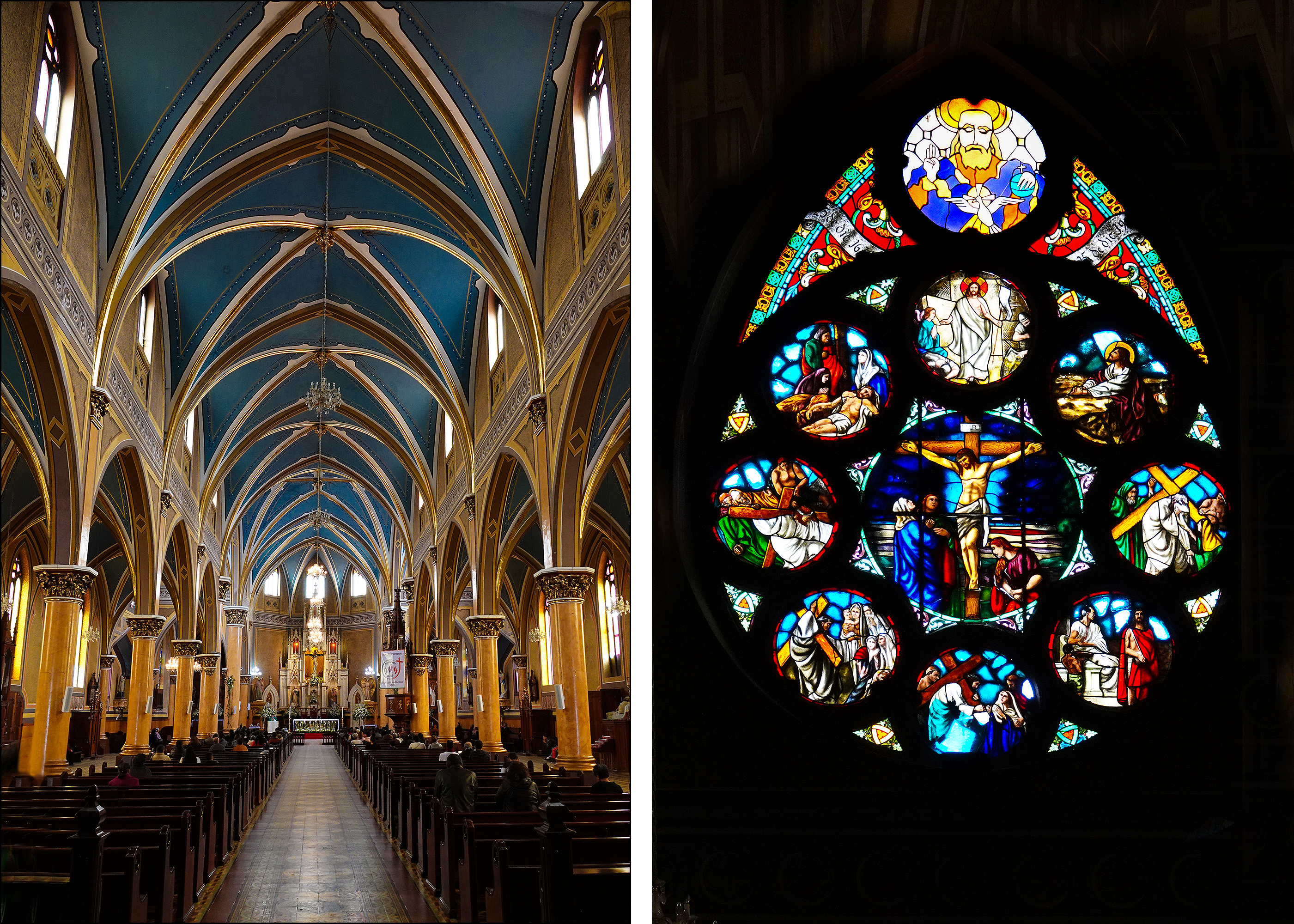
The interior of the basilica of Ubaté.
Ubaté turned out to be an excellent stopping point. Thanks to the national holiday it was hosting marching bands from schools all around the region, ranging from high schoolers to little kids no more than seven or eight. All of them were wearing extremely new and/or extremely cleaned-and-pressed uniforms. The bands were heavy on marching glockenspiels, which provided a very nice bell-like accompaniment to all the other instruments—though YMMV of course. I happen to like bell tones. The glockenspielers all twirled their sticks in sync, which perhaps is standard for glockenspielers? I don’t know. In any case, here’s the drum major for the Bandade de Honor of (I think) the school of San Juan Bautista De La Salle in Zipaquirá.
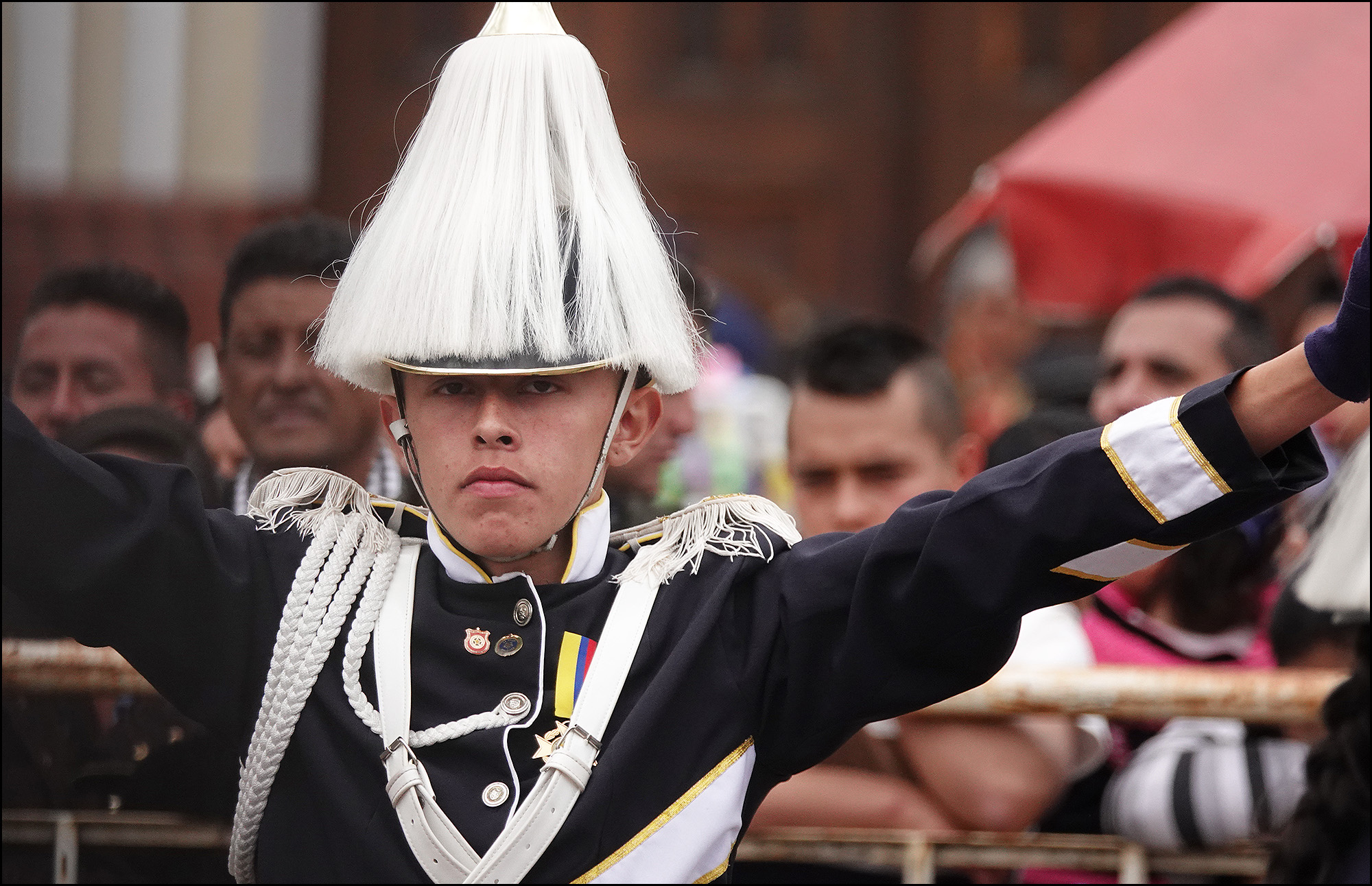
The drum major of the Bandade de Honor from Zipaquirá
I spent a couple of hours in Ubaté and ate a hot dog on a stick from a street vendor for lunch. Then I continued north to Chiquinquirá, where I immediately did something stupid. I took the wrong fork in the road leading out of town and passed through a toll booth. A couple of miles later I realized what I had done, but rather than turn around and pay another toll, I figured I’d just keep heading north to Barbosa and then cut south to Villa de Leyva. What could go wrong?
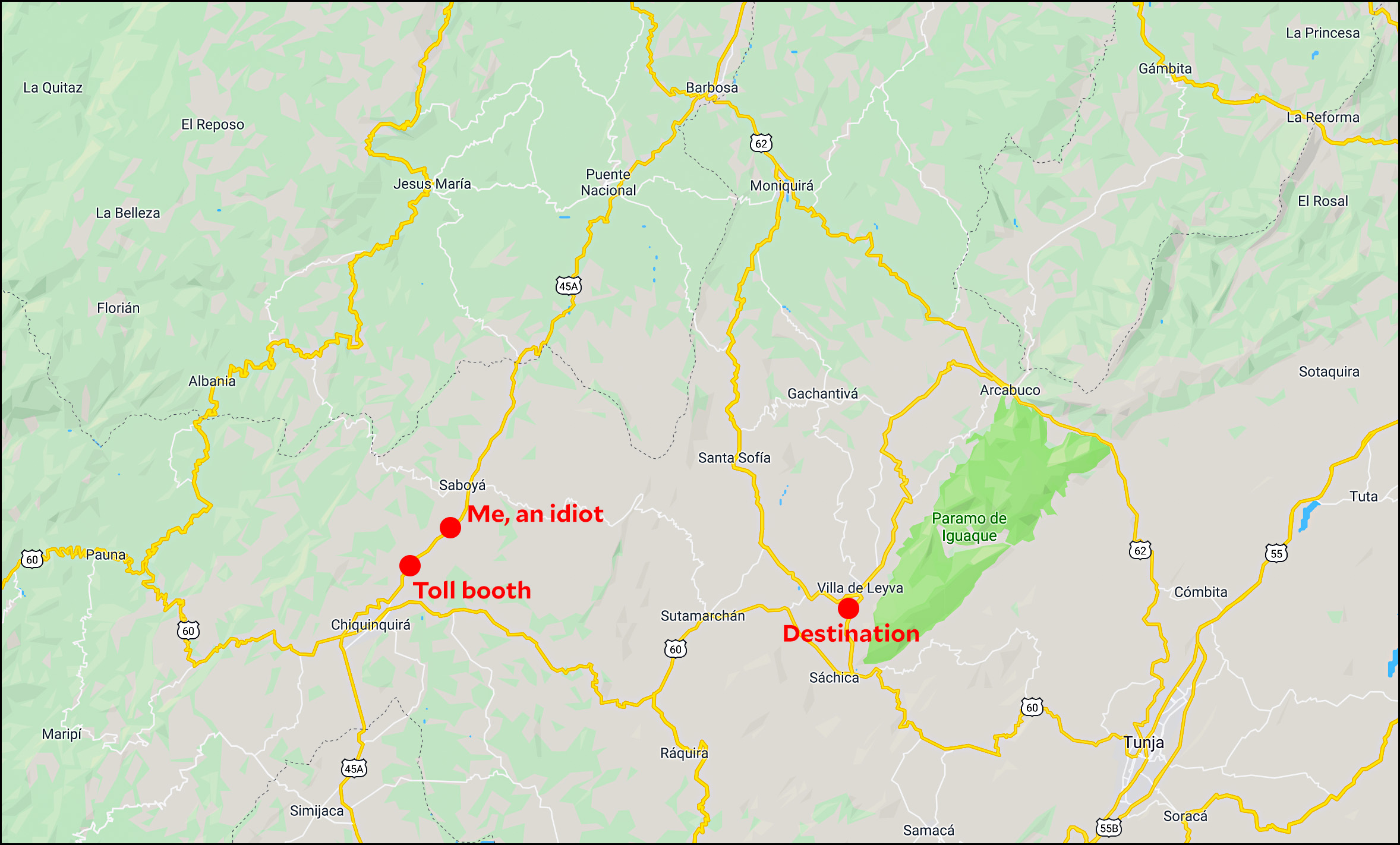
The road to Villa de Leyva
The road to Barbosa was no big deal, but it turned out that the road south from there to Villa de Leyva was mostly an unpaved bone-shaker with a top speed of maybe 20 mph or so. The end result of all this was that I did finally make it to Villa de Leyva, but not until 6 pm. This is a little before sunset, but thanks to the mountains and the overcast it’s nearly dark by then. The buildings around the town square are indeed old school, as advertised, but that’s about it for the place aside from lots of tourist shops selling ponchos and shawls. However, there were lots of kite flyers in the town square eking out a few last minutes of daylight.
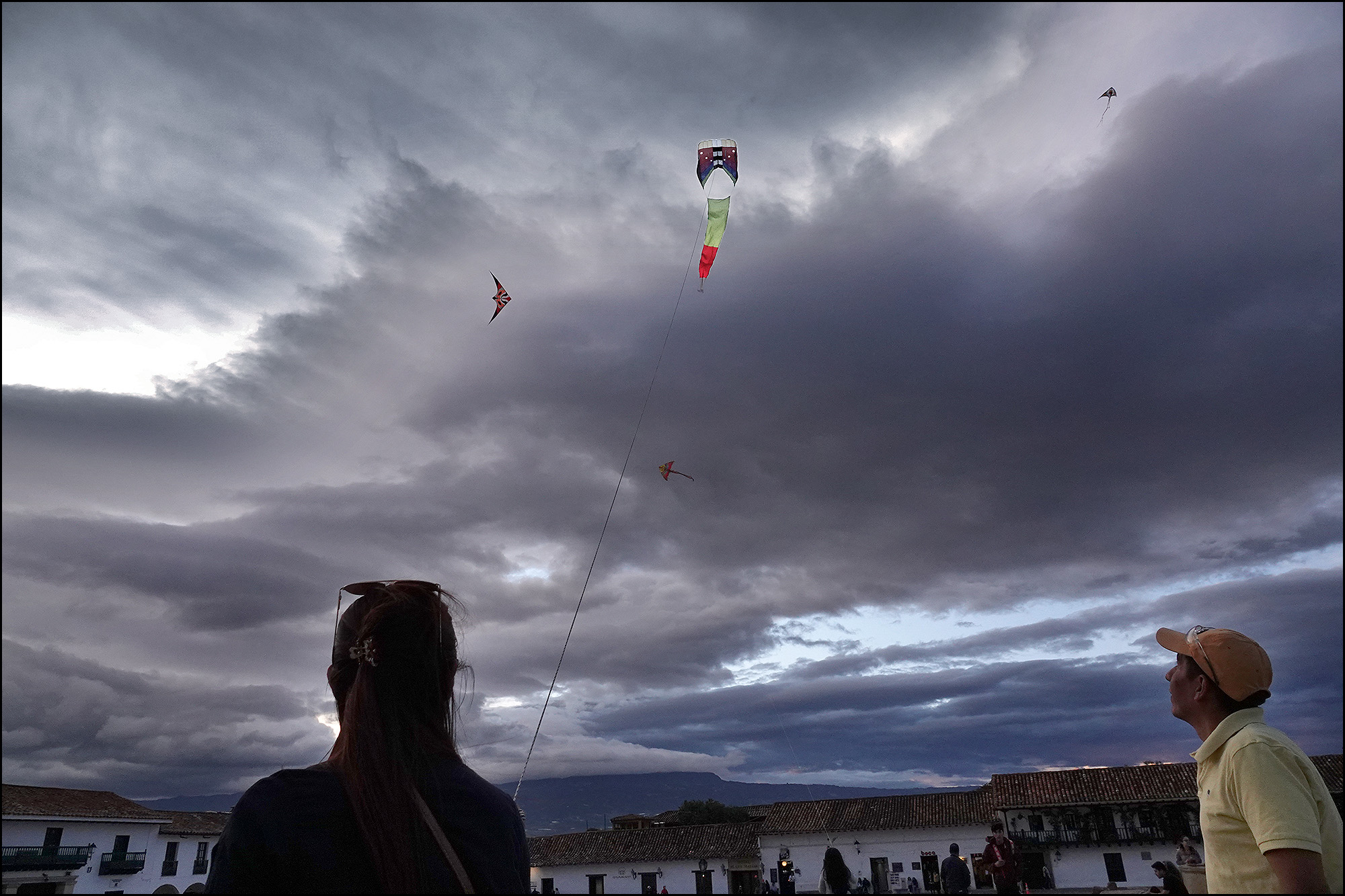
So I made it! But there was nothing much to do in Villa de Leyva, so I bought a can of peanuts and a bottle of coke and ate them in my car during the three-hour drive back to Bogotá.
NEXT: Thursday! Kevin goes to a national park.

















